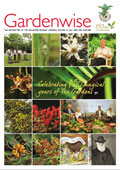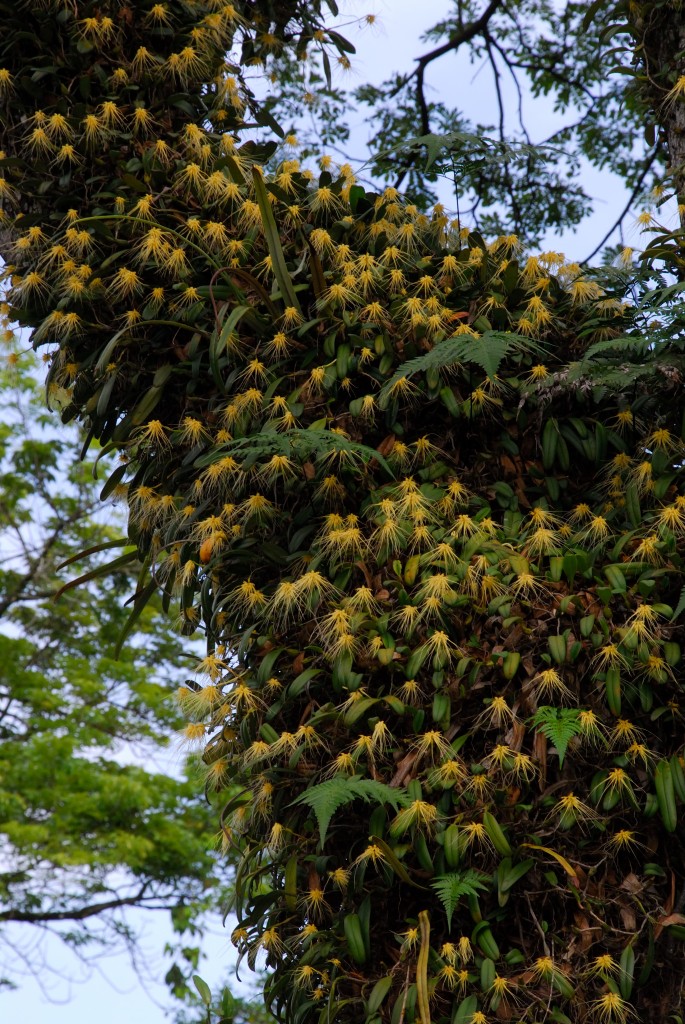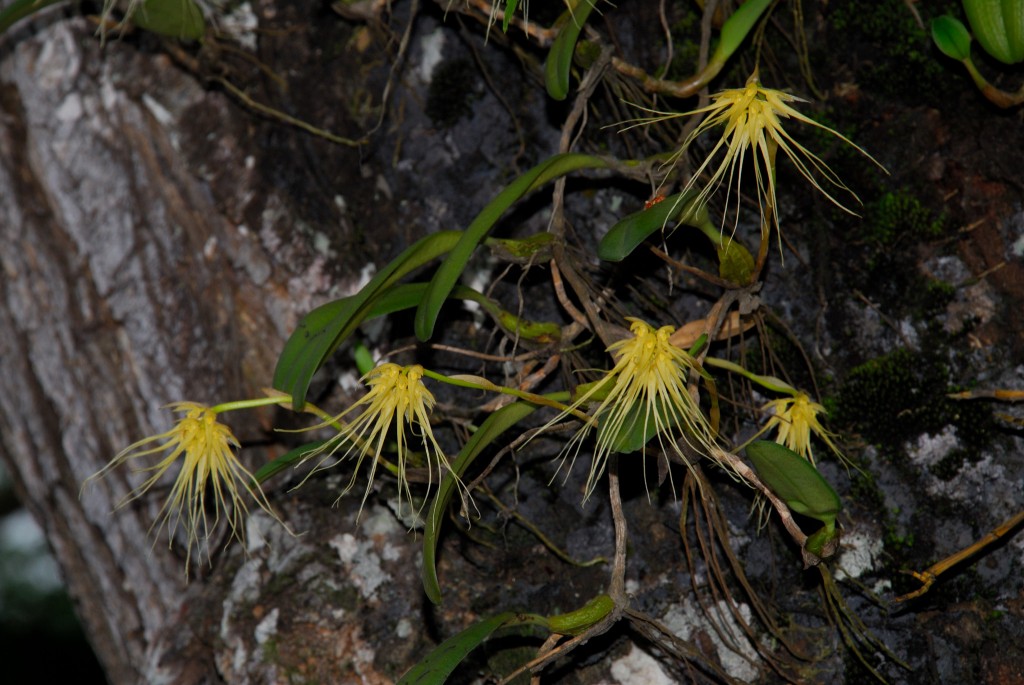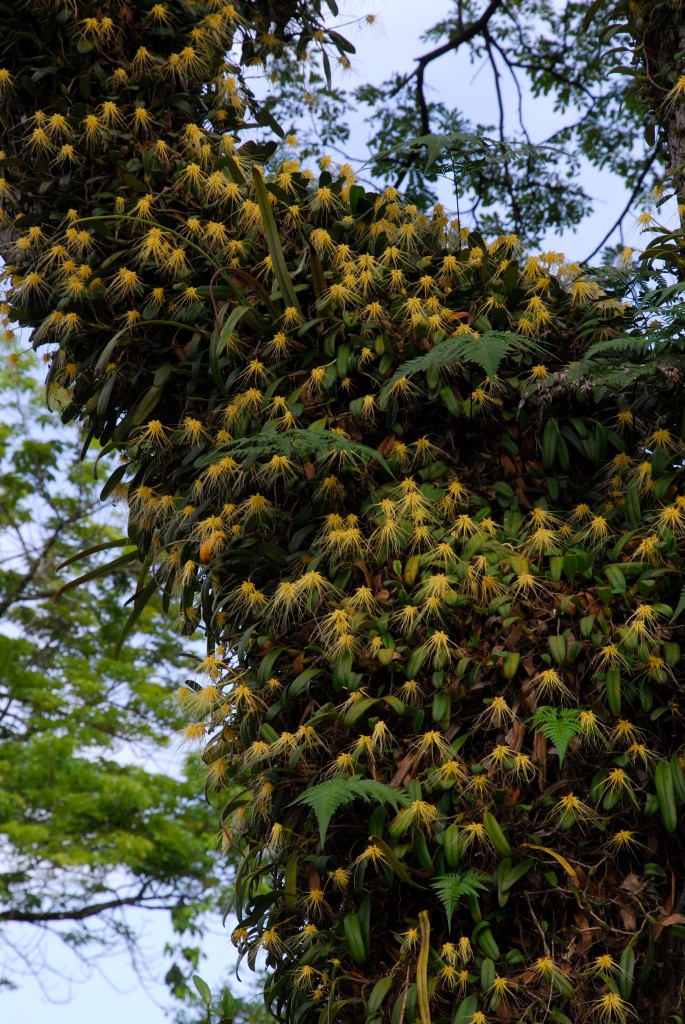When Orchids Flower Gregariously
We are so accustomed to seeing orchids in vases and bouquets, that it is easy to forget that they actually grow in the wild. But every so often, Singapore's native orchids set out to remind us of their presence - by flowering spectacularly all over the island at the same time.
Known as 'gregarious flowering', this flowering pattern is exhibited by 650 to 700 orchid species in the Asian tropics. Here in Singapore, the phenomenon last took place on 5 May 2009, when Dendrobium crumenatum (pigeon orchid) and Bulbophyllum vaginatum burst into bloom simultaneously. Both these orchids are epiphytes, and can be seen growing on roadside trees in Singapore.
How and why does gregarious flowering happen? In the tropical rainforest, which is the natural habitat of orchids, most species grow far apart from one another. This means that pollinators, such as bees, need to travel long distances between plants. If all the plants flower at the same time in one area, pollinators will be able to move from flower to flower quickly within a few hours to collect nectar and pollinate the flowers.
Since most of the orchids that flower in this manner last for only one day, it is important that they flower all at once, for the best chance of cross-pollination. In Dendrobium crumenatum, the pigeon orchid, all plants in an area flower at the same time - nine days after a heavy rainstorm. The drop in temperature that typically happens after such rains triggers the flowering of this orchid. The colour and fragrance of the massive number of flowers then attracts bees, which cross-pollinate the orchids.
The last round of gregarious flowering was especially outstanding because the pigeon orchid and Bulbophyllum vaginatum do not even typically flower at the same time. It is believed that each orchid species requires a different temperature reduction, or other stimulus, to trigger the development of its flower buds. The flowering time differs from one species to the next, since the buds of different species develop at different rates.
As nature's way of creating a win-win situation, gregarious flowering takes good care of all the parties involved. The pollinators get easy access to food, while the orchids are efficiently pollinated. It is extremely difficult to predict when the native orchids will flower gregariously, though. While you're waiting for the next instance to take place, why not visit the National Orchid Garden at the Singapore Botanic Gardens, and see the world's largest display of tropical orchids?
By Dr Yam Tim Wing
| DefinitionsEpiphyte: An epiphyte is a plant which grows on another plant for support. It is not a parasite, but uses the host plant for support only. Some 70% of the orchids in the tropics are epiphytes. They grow on tree branches, rooting in pockets of decaying leaves and humus, which are a source of nutrients for them. Cross-pollination: The transfer of pollen (which contains the male sex cells) from an anther of the flower of one plant to a stigma (female parts of the flower which are covered in a sticky substance that the pollen grains adhere to) of the flower of another plant. This enables the fertilisation and sexual reproduction of plants. Pollinators: Insects, birds, bats, and other animals that carry pollen from the male to the female parts of flowers for plant reproduction |
| This article was adapted from the July 2009 issue of Gardenwise. |  |
|
The flowers of Dendrobium crumenatum, the pigeon orchid.

Bulbophyllum vaginatum in full bloom, at Tiong Bahru Park

The simultaneous flowering of Dendrobium crumenatum (left) and Bulbophyllum vaginatum (right), at Tiong Bahru Park

A close-up of the Bulbophyllum vaginatum flowers






Have views or comments on this article? Let us know via this form. If you would like to give us feedback on any other areas relating to our parks and gardens, please submit via https://www.nparks.gov.sg/feedback